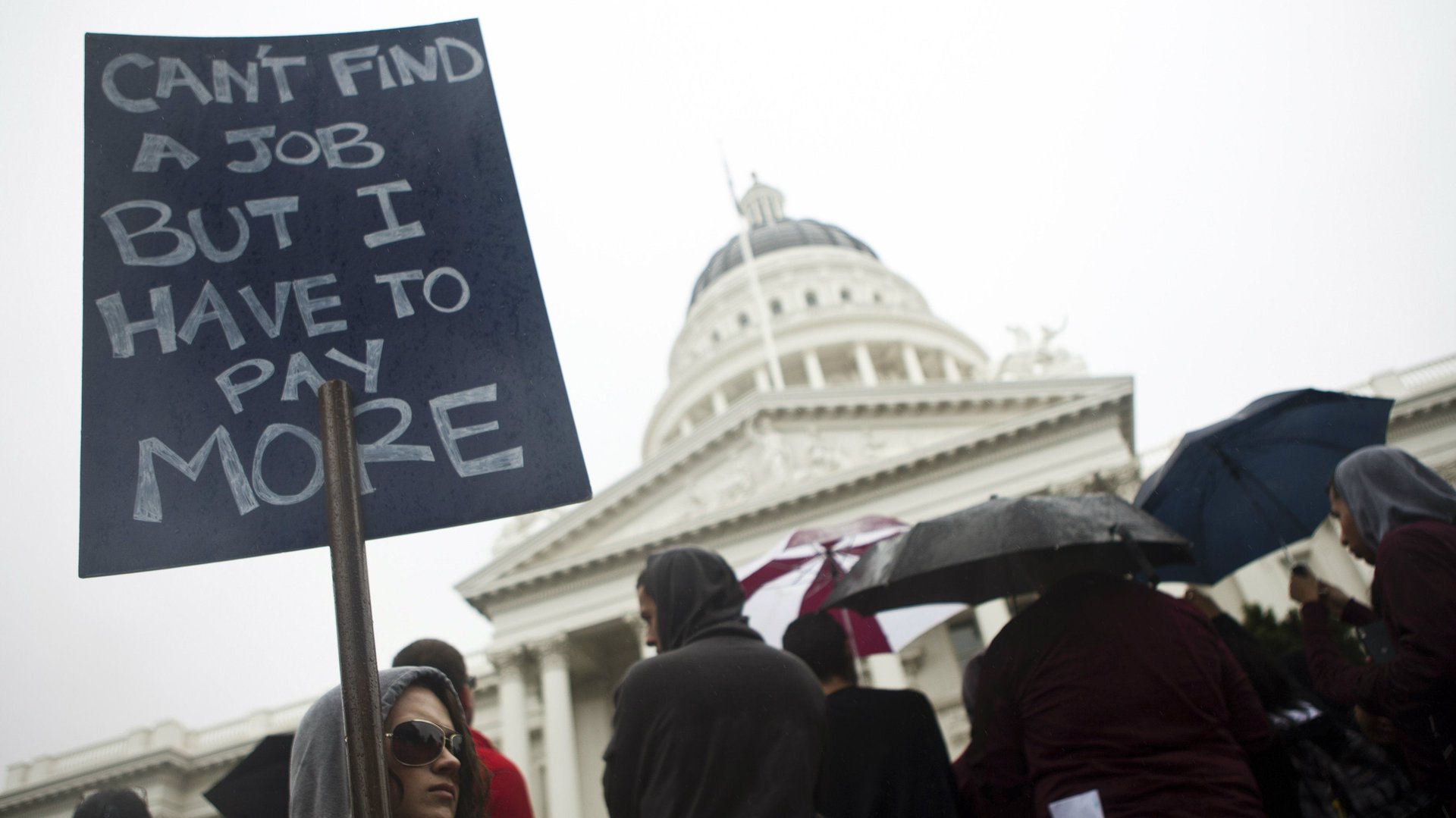There’s a better solution to the $1.5 trillion student loan crisis than debt forgiveness
Here’s the problem with student debt: It’s only a problem for some people. Americans of all ages owe almost $1.5 trillion in student loans and so many Americans are in debt it’s politically popular for a candidate like Elizabeth Warren to argue for the drastic action of wiping out student debt and offering free college. The concern with her plan—in addition to the feasibility of paying for it with a wealth tax—is that it is regressive. It is a bail out for Americans set to be the highest earners, those with a college education. Americans with the most student loan debt tend to have larger incomes.


Here’s the problem with student debt: It’s only a problem for some people. Americans of all ages owe almost $1.5 trillion in student loans and so many Americans are in debt it’s politically popular for a candidate like Elizabeth Warren to argue for the drastic action of wiping out student debt and offering free college. The concern with her plan—in addition to the feasibility of paying for it with a wealth tax—is that it is regressive. It is a bail out for Americans set to be the highest earners, those with a college education. Americans with the most student loan debt tend to have larger incomes.
For some borrowers, student debt can be crippling, particularly for college drop-outs or graduates of for-profit schools that grant degrees of dubious value, but for many others it’s a smart investment that will pay off in future earnings over decades. A better policy would target those who need debt relief, rather than all borrowers regardless of need.
One idea is income-based debt repayment, where a borrower is only required to pay back a defined fraction of their earnings—say 15%—and then only if they earn above some income threshold. This government program exists in America, and though it is not well publicized, 28% of borrowers with federal student loans take advantage of it. Anyone who has federal subsidized loans might be eligible, depending on the program they apply for. But in the UK, it is how most student debt is repaid. Universities in the UK only began charging fees in 1998, but they quickly escalated from about £1,000 ($1,279) in 1998 to £9,000 by 2012. Now, 85% British college students take out loans to pay for their education.
In the UK system, borrowers only pay back their loans if their income exceeds a floor, currently set at £18,395 a year (it was originally £10,000). For any income above that, 9% goes toward paying off the student loan, and is automatically deducted from the borrowers paycheck, like a payroll tax. After 25 years, any remaining balance is forgiven. This program has the advantage of ensuring that education loans do not overwhelm borrowers and higher earners don’t get an enormous subsidy from tax-payers.
But economists and policy makers (pdf) are concerned that such a program encourages borrowers to earn less and borrow more. What is the incentive to earn more than £18,395 when you need to pay 9% on every pound above it? But a new research paper by economists Jack Britton and Jonathan Gruber estimates the income floor does not discourage work. If the payment programs reduced the incentive to earn more, then there would be lots of borrowers whose earnings fall just short of £10,000, which was the earnings threshold during most of the period they studied. They don’t observe that, and found that even as the cut-off income level was adjusted over time, there wasn’t much clustering at the threshold. The economists estimate the distribution of earnings looks similar for non-borrowers.
Their study suggests income-based loan programs could be a better solution than blanket debt relief. Though it is important to note that while almost all borrowers in the UK are in the loan-based program, while Americans must opt into the less-popular US program, which suffers from low awareness and cumbersome enrollment process. The problem with an opt-in program is higher earners would prefer a more traditional loan repayment program, since their payments would be lower if they aren’t paying a fixed percentage of their (high) incomes. If only low earners chose income-based loan payments, the program may not be sustainable. To break even, some high-income borrowers are needed to offset those with low income who pay little or nothing. Success may require full participation.
The study also only considered earnings around the threshold early in borrowers careers. It’s not clear if an earnings-based program would encourage people to pursue less lucrative degrees and take lower paid jobs that would lead to lower pay for a lifetime. No student debt relief program is perfect, but income-based loan repayments may still be preferable to wide-spread debt forgiveness.